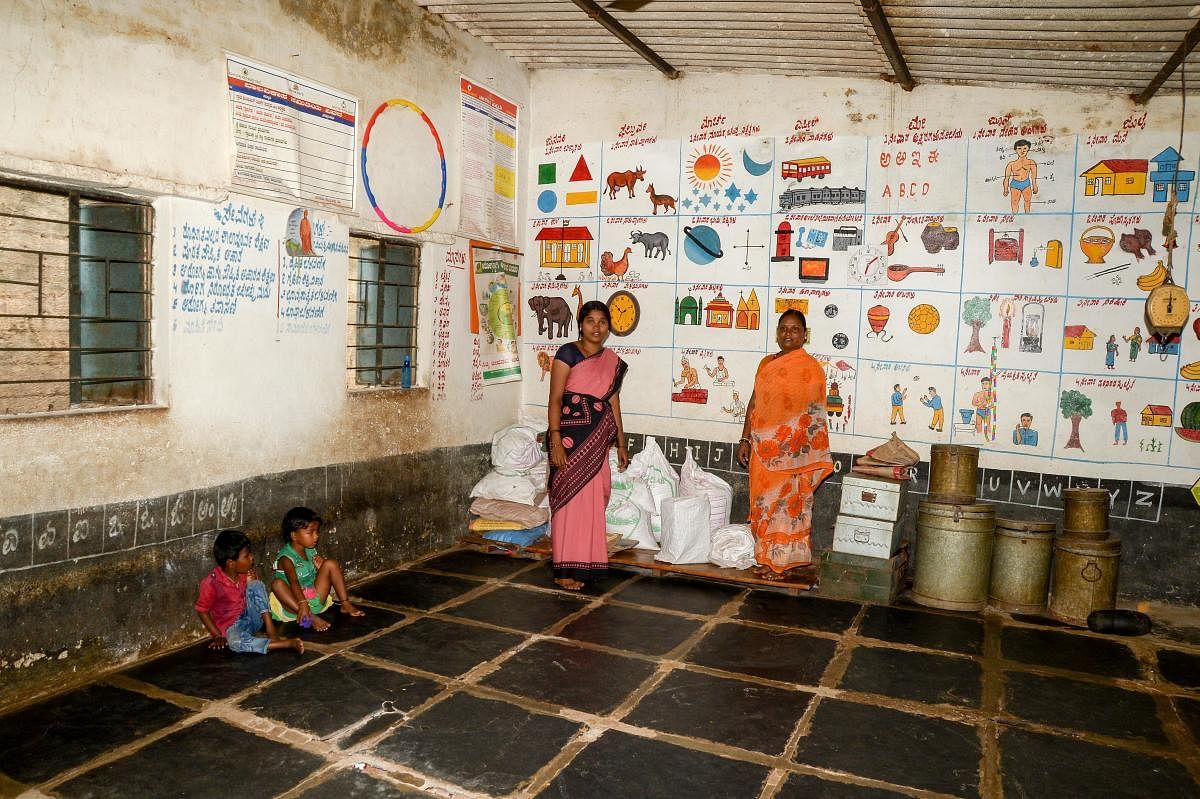Integrated child development services in India was introduced in 1975. Its most ambitious plan was to increase child survival rates among the economically backward and enhance the health, nutrition and learning opportunities of preschool children and their mothers. Services under ICDS converge at the same time on the same group of children.
Mrs Anutai Wagh, a child widow, who introduced early childhood education to the children of the poor tribals of western Maharashtra coined the expression “Anganwadi” to describe the simple low cost balwadis that she ran right in the courtyards of huts in tribal hamlets. And when ICDS was started this expression was picked up.
The pivotal person in these centres did not get a name. She was called an Anganawadi worker. , anyway what’s in a name.
The Anganwadi worker (AWW) is a moving sprit at the village level and the success of the programme depends a great deal on her skills and motivation. For an AWW every child counts and his or her needs are complex and different from those of other children. Great skill and patience is required at every step whether it is to feed or teach the child or even just to attract the child to the anganwadi and her work is very challenging. They are our unsung heroes.
The AWW has to be a local women and required to perform the following functions. Community survey and enlisting beneficiaries like children below six years, pregnant and nursing mother. Data about the number of families, family members and income should be obtained. Statistics particularly of new births and deaths are to be recorded. Physically-challenged exploited, and destitute children should be listed. Supplementary feeding 0-6 years of children and pregnant and nursing mothers should be conducted. Health and nutrition education to women children and the community also population education is a priority.
Non formal preschool education(3-6years), primary health care, detection of impairments in the early stages are all responsibilities of the AWW, contacting the parents of children coming to anganwadi through home visits and ensuring their participation in the programme, assisting health staff in immunisation and health check up, referral services for malnourished children, sick, and “at risk” children and cases of communicable diseases and children with impairments and maintaining liaison with other institutes in the villages and urban slum seeking their support and help for the ICDS programme are additional responsibilities.
An AWW has to maintain 22 registers manually. As per the focus survey it takes six hours of work every week. Meanwhile, the primary concern of the AWW has not been addressed for decades. Inadequate infrastructures, lack of basic equipment’, lack of community support and intimidation or extortion from the supervisors are frequent problems that they face. Presently, they get a salary of Rs 8000/month and likely to be hiked shortly.
However, the major concern is work overload. One AWW has to manage 30-40 children in the below 6 years of age. This in itself is a herculean task. We can make their work easier by digitising the number of registers. They need training and monitoring for detection of malnutrition using the current charts or perhaps they can be simplified.
The training should be imparted to her, to the grassroot level workers directly and at the AWC itself. Monitoring and training her at AWC is lot more effective in terms of finances, implementation of the programme.
May be involving her as the key stakeholder, reducing her frustrations of work overload, working equipment and infrastructure would go a long way in combating malnutrition which seems to be a tragic malady of the country. The Nation should invest in these young children at a time when there brain and body are at a crucial stage of development.
During my recent visit to Ginigere primary health centre in Koppala taluk, I was impressed with the Ipad the ANM was using. She very quickly uploaded the details of the women who had just delivered along with the partograph! They come under National Health Mission. One can think on similar lines— an app to make AWW's work easier, interesting, with additional features that would improve documentation with a component for monitoring and evaluation.
(The writer is a teacher in paediatrics for more than three decades)
